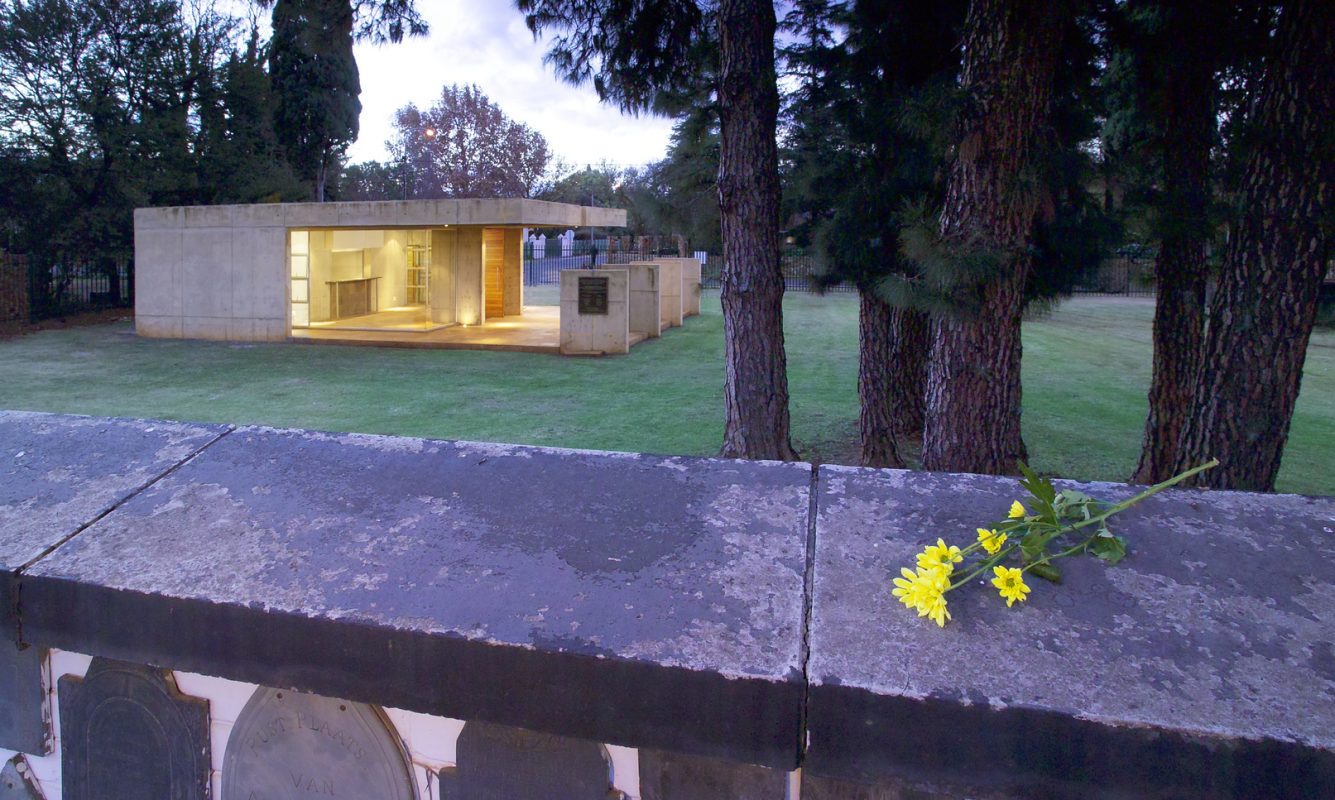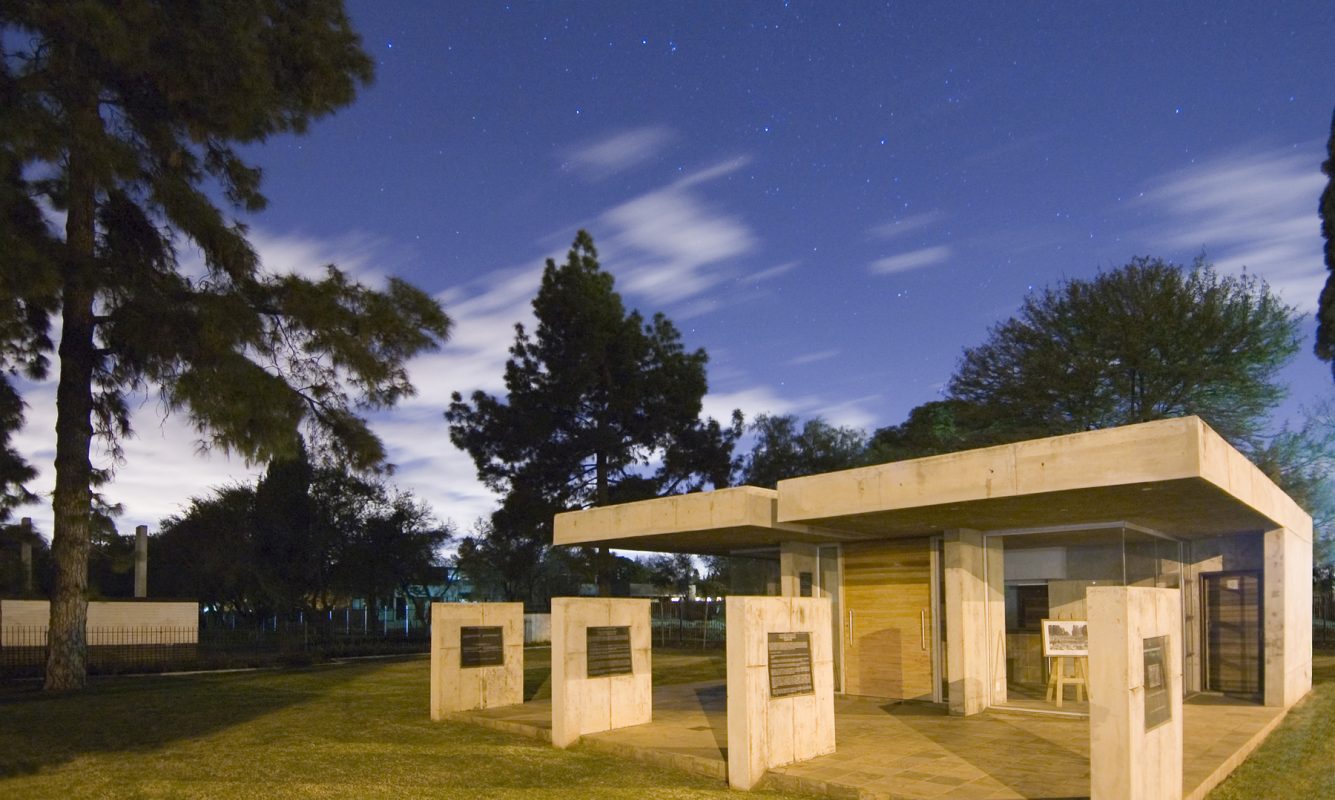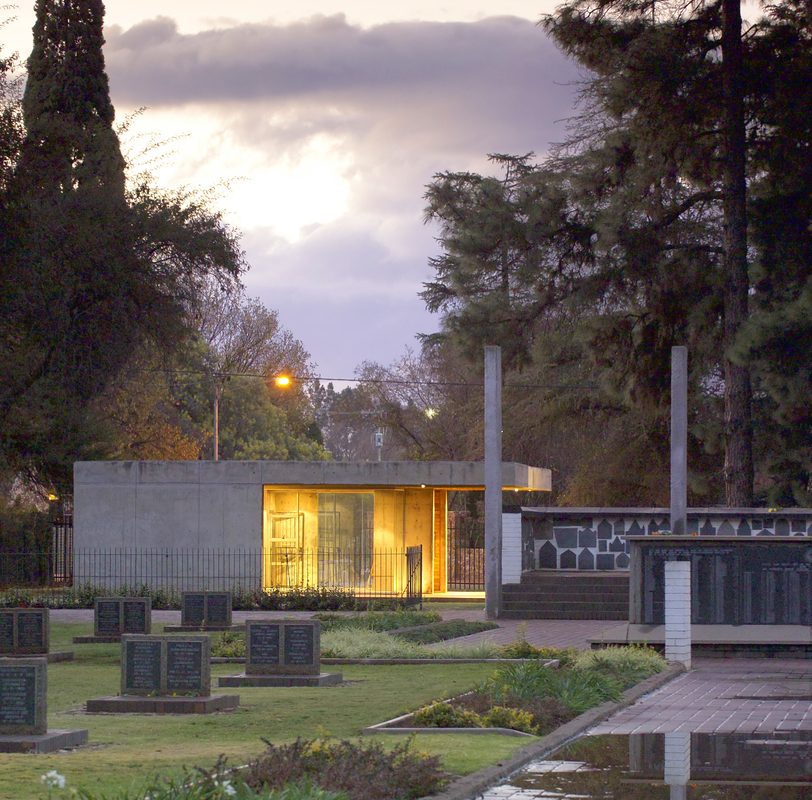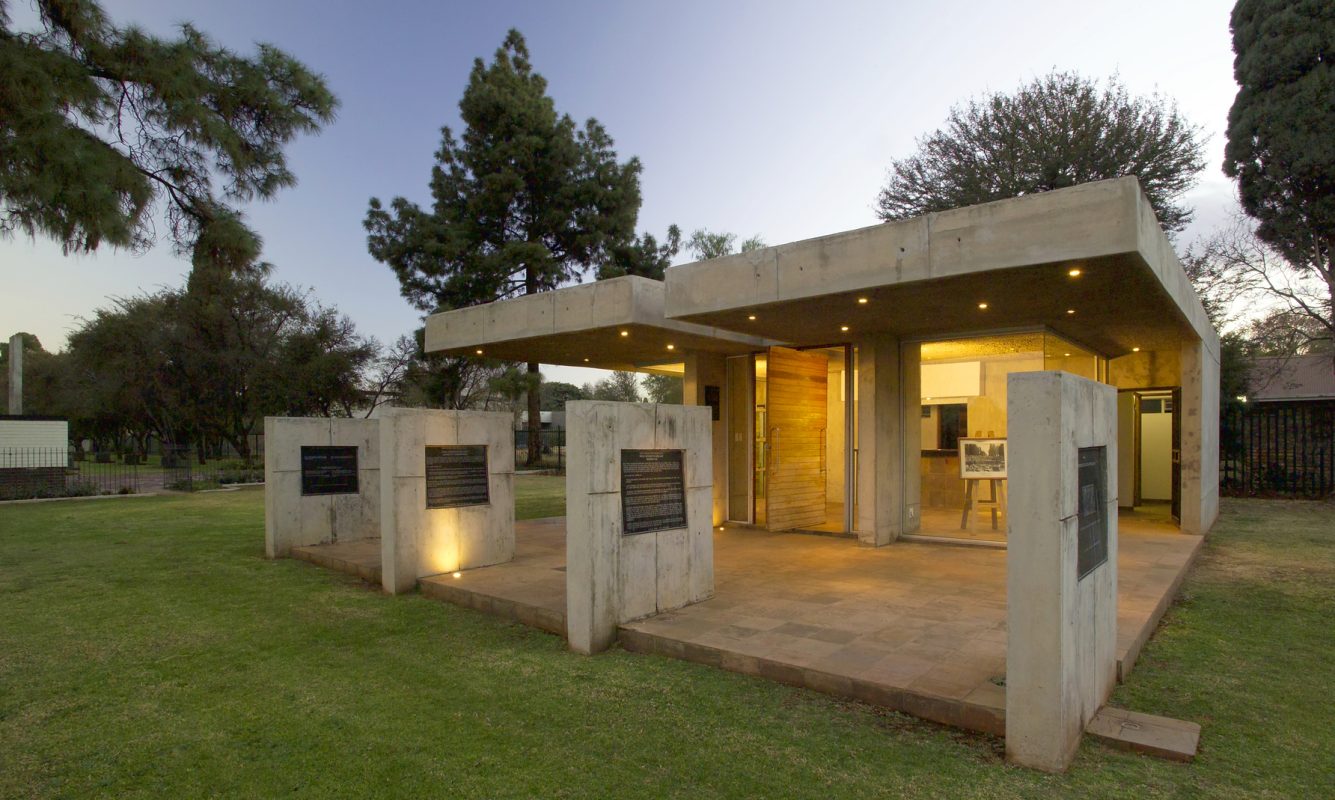
01 Dec LIGHTING IN DESIGN MAGAZINE

During the South African war (1899-1902) the Boers fought against the invading British forces. As a counter to their guerilla warfare, the British captured and moved the Boer woman and children to refugee, or concentration, camps. One of which was established in Irene, South of Pretoria. Thousands died due to malnutrition and lack of medication. The Centurion City Council donated R200 000 for a memorial building to coincide with the centenary celebrations of the outbreak of the war in October 1999.
THE SITE:
The Irene cemetery is situated on a narrow rectangular site with a strong linear processional axis from the southern entrance through to the wall of remembrance as a focal point at the north. An open space at the northern entrance to the cemetery, was identified for the memorial building.
THE MEMORIAL BUILDING ACCOMMODATION:
• Covered entrance • Exhibition area • Kitchen • Public toilets The boundaries between the inside and outside of the building are disguised by a large cantilevered concrete structure over the entrance. Curtain glazing serves to merge the internal and external spaces ensuring that the building is inviting rather than intimidating in solidity or scale. The heaviness of the cantilever concrete is divided into two seemingly separate elements above the main entrance door. The lightness of this `split` is continued internally by way of glass blocks cast horizontally in the concrete roof, which allow for a row of square natural light sources. The tomb stones in the cemetery form a strong rhythm as the visitor proceeds towards the memorial building from the south. This rhythm is echoed in the obelisks that accommodate granite plaques depicting the background and history of the cemetery. These elements, coupled with the stark symmetry of the design and the off-shutter concrete façade finish, resulted in a formal and sacred effect.





